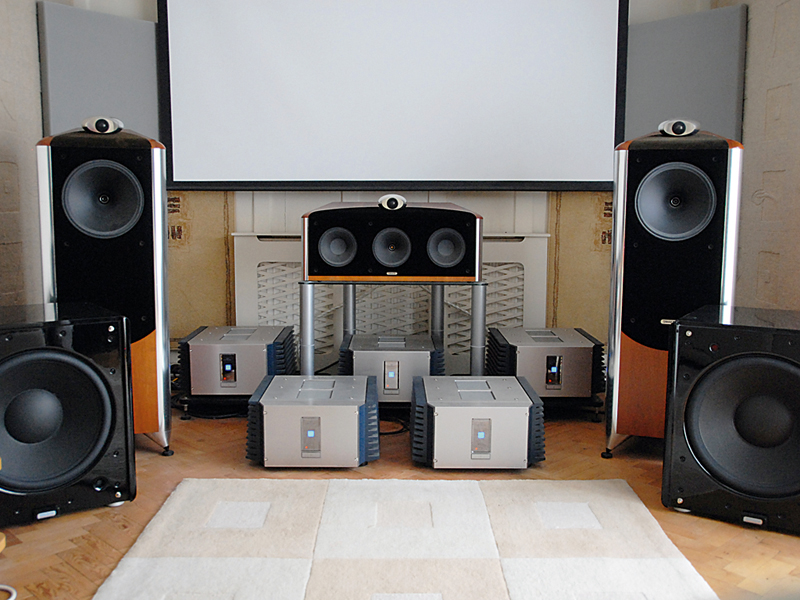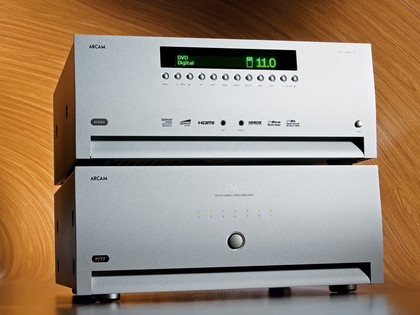The future of AV receivers
Why your AVR does more than just amplify your sound

Today's AV receiver is the ubiquitous hub of any serious home entertainment system. From simply broadcasting the radio to a fully networked beast capable of streaming HD video and 11.3 channels of surround sound to several rooms in your home, the breed is as versatile as it is complex.
Established brands, once famous for their two-channel expertise, now make their living from AVRs, with models ranging from a few hundred quid to thousands of pounds apiece. It wasn't always this way.
The term receiver emerged in the 1950s when radio listening required a tuner, pre-amplifier and power amplifier to drive a speaker. Harman was the first company to put all that in a single box and the receiver was born.
Skip to the early 90s and the new interest in bringing cinema sound to the home brought Dolby Surround and amplifiers that needed several channels rather than just two. Twenty years on and the AVR has evolved to become a networked hub of digital media. And according to manufacturers working on the development of the next generation of AVRs, this is just the beginning.
Nick Hamada, product and marketing manager at Onkyo, is already working on products that won't see a retailer's shelf for two years. 'AVRs will become hubs for much more than just music and movies, and network connectivity will be one of the key ways to realise that,' he told me.
'Moreover, flatscreen TVs are becoming bigger and bigger, and people will demand higher resolution video than current full HD pictures can offer. That is a scenario we are already busy planning for.'
The bigger picture
Sign up for breaking news, reviews, opinion, top tech deals, and more.
Clearly, handling 4K 'Super High-Definition' (4,096 x 2,160) content will be a big challenge for AVR manufacturers even if, like 3D handling at present, they only offer a switching function. If future AVRs were to offer image processing of 3D and 4K HD content, their core video processors will require a major upgrade over current AVR video technology.

Once that sort of number-crunching power is on board, it would be logical to include one of the emerging 2D to 3D real-time content converters, potentially using a Cell processor. This is perhaps a little way off, and companies who would divulge what they were working on were focusing on evolving their current tech and features. Even this can cause issues, as the lifecycle of a product with IT at its heart can be shorter than a mayfly with a heart condition.
NAD's director of product development, Greg Stidsen, comments: 'It looks like internet video streaming and 3D with higher resolution will be the next big things in home cinema development. But nobody knows for sure exactly what is next. This is why we introduced the Modular Design Concept in 2006 allowing digital circuits to be upgraded as technology evolves. We're now introducing our third-gen of modules, adding HDMI v1.4 and Audyssey MultEQ XT32 RoomEQ.'
Features such as RoomEQ have added a huge degree of control to the setup of any multichannel system, enabling complete novices to tune theirs to the room in a matter of minutes. Not 10 years ago, this would have taken a team of professionals with several laptop PCs and high-end mics.
The upshot is a real-world performance leagues ahead of AVRs from only a decade ago. The complexity of EQ systems will continue to evolve in tandem with jitter-reducing tech such as DenonLink and Pioneer's PQLS, to realise improvement in AVR audio performance year on year.
Oliver Kriete, senior manager at Marantz Europe, explains: 'As we see it, today's AVR is more and more the centre-piece of the home entertainment system.' He goes on to say, 'Our core will maintain the advancement of audio processing and amplification performance, but the higher focus will be on the built-in source, the network connection. With the wide variety of digital contents the big challenge will be to make that content easily accessible.'